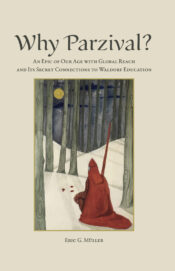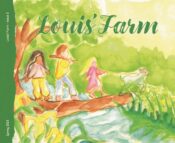 Roadmap to Literacy Books & Courses
Roadmap to Literacy Books & Courses Great books for Waldorf Teachers & Families
Great books for Waldorf Teachers & Families Training in Traumatology & Artistic Therapies
Training in Traumatology & Artistic Therapies Waldorf Training in Australia
Waldorf Training in Australia Immersive Academics and Arts
Immersive Academics and Arts Training in Traumatology & Artistic Therapies
Training in Traumatology & Artistic Therapies ~ Ensoul Your World With Color ~
~ Ensoul Your World With Color ~ Quality Education in the Heartland
Quality Education in the Heartland Jamie York Books, Resources, Workshops
Jamie York Books, Resources, Workshops Everything a Teacher Needs
Everything a Teacher Needs Middle School Science With Roberto Trostli
Middle School Science With Roberto Trostli Transforming Voices Worldwide
Transforming Voices Worldwide Bringing Love to Learning for a Lifetime
Bringing Love to Learning for a Lifetime Caring for All Stages of Life
Caring for All Stages of Life Full-Time Teacher Education
Full-Time Teacher Education Flexible preparation for your new grade
Flexible preparation for your new grade The Journey is Everything
The Journey is Everything Association for a Healing Education
Association for a Healing Education Waldorf-inspired Homeschool Curriculum
Waldorf-inspired Homeschool Curriculum Train to Teach in Seattle
Train to Teach in Seattle Summer Programs - Culminating Class Trips
Summer Programs - Culminating Class Trips Space speaks. Its language is movement.
Space speaks. Its language is movement. Grade-specific web courses for teachers
Grade-specific web courses for teachers Waldorf Stories for Everyone
Waldorf Stories for Everyone Preparing Teachers for 2024-25 Grades 1-8
Preparing Teachers for 2024-25 Grades 1-8 Grade Level Training in Southern California
Grade Level Training in Southern California Bay Area Teacher Training
Bay Area Teacher Training
Would you like to become a sponsor?
Waldorf News
My fight to get screens out of schools
September 11, 2023
It was gratifying to see the recent Unesco report recommending moderation on the topic of tech in the classroom. I do hope the Department for Education, Ofsted and every school head in the country has read it. Britain seems to have submitted to the tidal wave of digital learning without so much as a minnow of doubt. The switch to online lessons during the lockdowns should have been temporary, an emergency measure – not something we then accepted wholesale. Personally, I find the sight of 26 bright faces glued to 26 bright screens for lesson after lesson indefensible. The argument that these platforms are ‘adaptive’ is unpersuasive – a good teacher is adaptive. Multiple teachers have been very candid with me about the failure of tech in the classroom. Rachael G, an assistant principal from a school in Hackney, east London, saw first-hand the damage caused by giving every child an iPad in her previous school. More »

An Introduction to Why Parzival?: An Epic of Our Age with Global Reach and Its Secret Connections to Waldorf Education
September 5, 2023
In Why Parzival? I have endeavored to explore the diverse reasons why this particular epic has played such a central role in the Waldorf high school curriculum and why it continues to be significant, especially in our troubled current socio-political climate, marked by such multi-levelled divisiveness. For my part, I have taught the block for the last twenty-five years at the Hawthorne Valley Waldorf High School in upstate New York. I have loved teaching Parzival for a number of reasons: it’s a profound story that relates to where the 11th graders are in their development; it addresses the challenges that we, as modern human beings, are forced to face, while providing answers and solutions to almost every challenge imaginable; it clarifies the different layers of love, life, and death from inner and outer perspectives; and Parzival’s journey is the prototype of each person’s evolving journey out into the world and into the soul’s interior, offering endless opportunities for in-depth discussions. More »

The Birth of Louis' Farm
June 12, 2023
For two years my wife Elodie, a visual artist, had been asking me to start a children's magazine with her. Elodie was inspired by Fanette et Filipin, a Waldorf-based magazine here in France, and by our common desire to help children thrive. She felt that with her artistry and my experience as a writer and Waldorf educator, we could make something really special. But I said no, no, no! Amid English classes, choir directing and other creative projects, where would I find the time? And then came Covid. With all of its horrible downsides, this crisis did open up a lot of people's schedules, including mine. So at last I said yes, and Louis' Farm was born! The first two issues of our magazine are being read and enjoyed by children across the English-speaking world. Each issue contains 50 pages of original stories and artwork, along with diverse games, activities, songs and poems that foster children's creativity and closeness to nature. More »
Nature or nurture: do we need more empathy in marketing?
June 6, 2023
It’s no coincidence that empathy is a key component of creativity, being linked to the imagination. It’s the process of imagination over perception that marks the difference between empathy and sympathy. We can perceive a person’s situation and feel sympathy toward them, but when we imagine what it must feel like, we feel empathy. Creatives are imaginative people so, in theory, empathy should come easily to us. Empathy isn’t a new concept in marketing. It's something that underpins Greg Hoffman’s excellent book ‘Emotion by Design’ where he recounts his 30-year career at Nike. It’s been a buzzword in the creative world for a good few years, but what is it, and more importantly, how do we attain it? More »

How Mrs. Emmet Built a School That Stood the Test of Time
May 2, 2023
Mrs. Emmet found Rudolf Steiner’s work through a Edgewood School colleague who was one of the original teachers at the first Waldorf school in Stuttgart, Germany. As Beulah and Robert Emmet’s family began to grow, she was drawn to a farm in Wilton, New Hampshire: “It lies off the beaten track,” Mrs. Emmet wrote in Farm to School, “but not too far. It is on the top of a hill, but not too high. [...] At the top of the rise swings a wide welcoming circle of brown buildings crowning the top of the hill—the end of the journey. Not too far, not too high—but high enough for breadth of view and far enough for perspective on a busy world and a frantic struggle to get somewhere.” It was, for Mrs. Emmet, the right spot for her new school, and work began to transform this summer residence. More »
 Recent Jobs
Recent Jobs
View more jobs »
 Newsletter Archive
Newsletter Archive
 Join the Mailing List!
Join the Mailing List!
Stay Connected…
Each week receive the Waldorf News Weekly Update, full of news, events, and more. Keep abreast of what's happening with Waldorf education.
 RSS Feeds
RSS Feeds